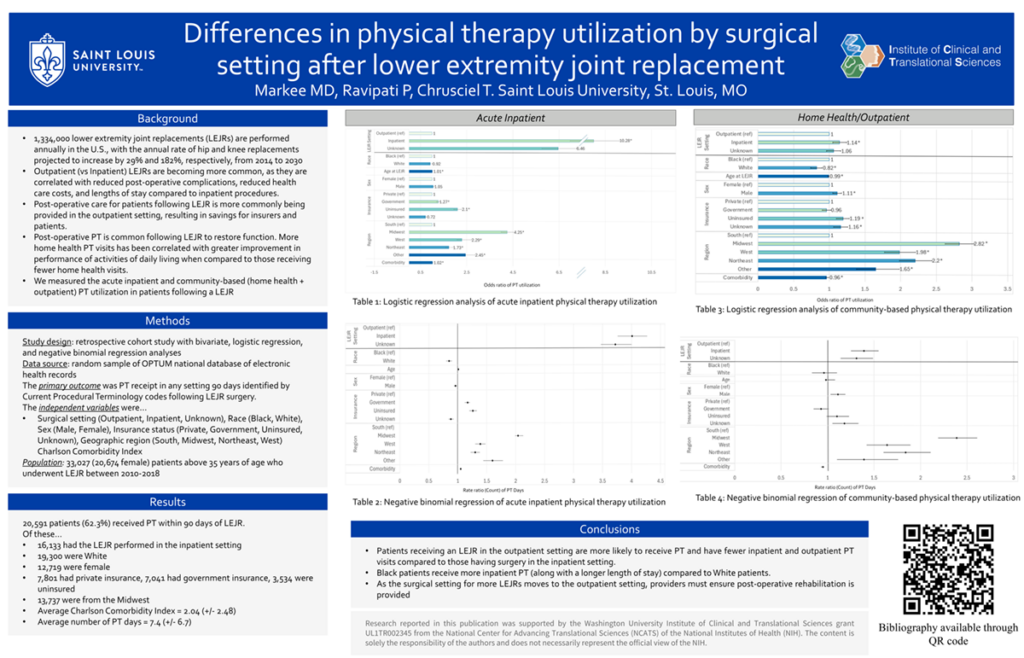
Introduction: Patients receiving a lower extremity joint replacement (LEJR) are commonly prescribed physical therapy (PT) to address pain, range of motion, and function. As LEJRs are more commonly performed in an outpatient setting, particularly in a younger population, patients are less likely to receive inpatient PT, potentially resulting in increased utilization of community-based (home health and outpatient) PT. The purpose of this research is to compare the utilization of acute inpatient and community-based PT in patients receiving an inpatient LEJR versus those receiving an outpatient LEJR.
Methods: This retrospective cohort study utilized the Optum de-identified electronic health record database from 2010-2018. The cohort included 33,027 patients over 35 years of age who had an LEJR between 2010-2018. The primary outcome of interest was receipt of PT in the 90 days following LEJR in various settings. Covariates included the LEJR setting, race, age, sex, insurance status, geographic region, and Charlson Comorbidity Index. Logistic regression analyses were used to determine the likelihood of PT receipt, and negative binomial regression analyses estimated the amount of PT used. A secondary analysis compared patients < 65 and ≥ 65 years of age.
Results: 20,591 patients received PT within 90 days of the LEJR procedure. 16,133 of these were inpatient surgeries and 1,378 were outpatient surgeries. The average days of PT was 7.4 (+/-6.7 days). Adjusted models show those with an inpatient procedure received four times as many days of acute inpatient PT (Rate Ratio 4.01; 95% CI: 3.76-4.27) and 39% more days of community-based PT (RR 1.39; 95% CI: 1.25-1.55) than those with an outpatient procedure. When stratifying by age, the odds of receiving community-based PT was greater in those with an inpatient procedure <65 years of age (OR 1.48; 95% CI 1.32-1.66) but less likely in those > 65 years (OR 0.81; 95% CI 0.73-0.91).
Impact: With the rate of LEJR outpatient procedures increasing, attention must be paid to the amount of post-operative PT. Since community-based PT is correlated to improved outcomes, insurers and policymakers should ensure quality and adequate care in community-based PT settings is delivered.
Organization: Saint Louis University
Markee MD, Ravipathi P, Chrusciel T